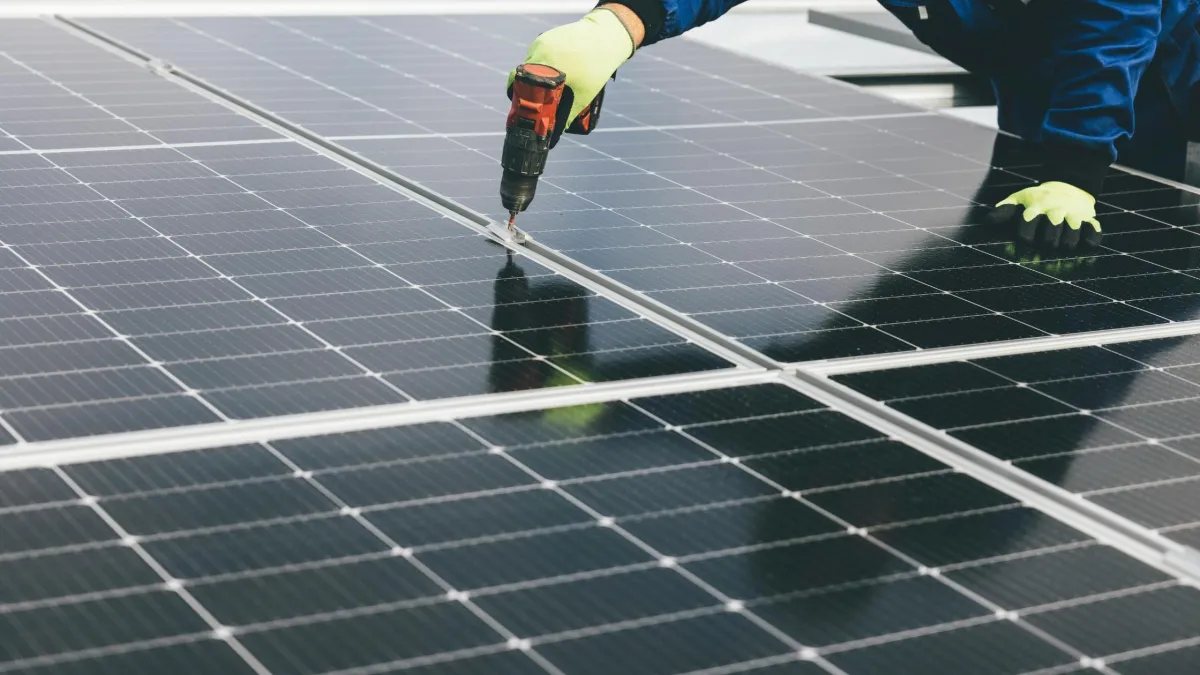Solar & Energy News

10 Essential Solar Panel Maintenance Tips
Solar panels are a significant investment that can deliver decades of clean, renewable energy for your home or business. While solar systems are remarkably low-maintenance compared to other energy solutions, regular care ensures optimal performance and longevity. Whether you're in sunny Queensland, New South Wales, or Western Australia, proper maintenance can mean the difference between maximum efficiency and underperforming panels that cost you money.
This comprehensive guide shares expert solar panel maintenance tips to help you protect your investment and keep your system running at peak capacity for years to come.
Understanding Why Solar Panel Maintenance Matters
Solar panels are designed to withstand harsh Australian weather conditions, from scorching summers to heavy rain and coastal salt spray. However, environmental factors inevitably impact their performance over time. Dust, bird droppings, pollen, and debris accumulate on panel surfaces, creating barriers that block sunlight and reduce energy production.
Studies show that dirty solar panels can lose between 15-25% of their efficiency. In Australia's diverse climate zones, this efficiency loss translates directly to reduced energy savings and longer payback periods. Regular maintenance ensures you're getting the maximum return on your solar investment.
1. Schedule Regular Visual Inspections
The foundation of good solar panel maintenance starts with regular visual inspections. Walk around your property every few months to examine your panels from ground level. Look for obvious signs of damage such as cracks, discolouration, or debris accumulation.
Check for tree branches that may have grown closer to your panels, creating shade or posing a falling hazard during storms. Inspect the mounting hardware to ensure everything remains secure and properly aligned. While you shouldn't climb onto your roof without proper safety equipment, binoculars can help you spot potential issues from a safe distance.
During inspections, also observe your surroundings. New construction, growing vegetation, or other changes in your environment might create shading issues that didn't exist when your system was installed.
2. Monitor Your System's Energy Production
Modern solar systems come with monitoring capabilities that track energy production in real-time. Make it a habit to check your system's output regularly through your inverter display or smartphone app.
Establish a baseline for normal production during different seasons and weather conditions. If you notice a sudden drop in energy generation that isn't explained by cloudy weather or seasonal changes, it's time to investigate further. Consistent monitoring helps you identify problems early, often before they become expensive repairs.
Compare your actual production against your system's expected output. Most quality solar installations should maintain at least 80-85% of their rated capacity throughout their warranty period.
3. Keep Panels Clean and Free from Debris
Cleaning is perhaps the most important aspect of solar panel maintenance. In Australia's dusty conditions, particularly in rural areas and during dry seasons, panels can accumulate significant grime that blocks sunlight.
For ground-level or easily accessible panels, you can perform basic cleaning yourself using a soft brush, squeegee, and clean water. Avoid harsh chemicals, abrasive materials, or high-pressure washers that can damage the protective coating on your panels. Early morning or late evening cleaning prevents the water from evaporating too quickly and leaving mineral deposits.
However, rooftop installations require professional cleaning for safety reasons. Working at heights without proper training and equipment is dangerous and can void your warranty if you damage the panels. Professional solar maintenance services ensure your panels are thoroughly cleaned without risk of damage or personal injury.
For most Australian homes, professional cleaning twice a year is sufficient, though properties near major roads, industrial areas, or agricultural zones may benefit from quarterly cleaning.
4. Trim Surrounding Vegetation
Trees and bushes grow continuously, and branches that were once clear of your panels may eventually create problematic shade. Even partial shading on a single panel can significantly reduce your entire system's output due to how solar panels are wired together.
Regularly trim back any vegetation that threatens to shade your panels, particularly during peak sun hours between 9 AM and 3 PM. Consider the seasonal growth patterns of trees and shrubs, and plan your trimming accordingly.
While vegetation management is important, be mindful not to remove trees that provide cooling shade to your home, as this could increase your air conditioning costs and negate some of your solar savings.
5. Check and Clean Your Inverter
Your inverter is the hardworking component that converts DC electricity from your panels into AC electricity for your home. Most inverters have indicator lights or displays that show system status.
Keep the area around your inverter clean and well-ventilated. Inverters generate heat during operation and need adequate airflow to function efficiently. Remove any stored items, debris, or spider webs that accumulate around the unit.
Check your inverter's display regularly for error messages or warning lights. Consult your system manual to understand what different indicators mean, and contact your installer if you see persistent error messages.
6. Inspect Wiring and Connections
Exposed wiring can deteriorate over time due to weather exposure, pest activity, or simple wear and tear. During your regular inspections, look for any loose, exposed, or chewed wires around your panels and inverter.
Check that cable clips and conduit remain securely attached to your roof and walls. Look for signs of corrosion on connection points, particularly in coastal areas where salt air accelerates deterioration.
Never attempt to repair electrical components yourself. Solar systems carry dangerous voltage levels that require licensed electricians to service safely. If you spot any wiring concerns, arrange for professional inspection immediately.
7. Monitor for Pest Activity
Australian wildlife, particularly birds and possums, can create problems for solar installations. Birds may nest under panels, and their droppings significantly reduce panel efficiency whilst their nesting materials can create fire hazards.
Consider installing mesh or clips around the perimeter of your panel array to prevent birds from accessing the space underneath. These barriers allow airflow whilst keeping pests out.
Regularly check for signs of pest activity such as droppings, nests, or chewed wiring. Address pest problems promptly to prevent damage to your expensive solar investment.
8. Review Your System's Performance Data
Beyond daily monitoring, conduct quarterly reviews of your system's performance data. Most modern systems store historical production information that reveals long-term trends.
Compare your current quarter's production to the same period in previous years. Account for weather variations, but investigate if you see declining trends that exceed normal degradation rates. Solar panels typically degrade at about 0.5-0.8% per year, so significant deviations warrant professional assessment.
Document any maintenance activities, cleaning dates, and repairs in a logbook. This record helps you identify patterns and proves valuable if you need to make warranty claims.
9. Schedule Professional Maintenance Annually
Whilst many maintenance tasks are suitable for DIY approach, annual professional servicing ensures your system receives expert attention. Qualified technicians have specialised equipment to perform detailed electrical testing, thermal imaging to identify hot spots, and comprehensive system diagnostics.
Professional maintenance includes checking all electrical connections, testing safety mechanisms, verifying proper earthing, and ensuring compliance with current electrical standards. Technicians can spot potential problems before they cause system failures or safety hazards.
Annual professional maintenance often satisfies warranty requirements and provides documentation that may be necessary for insurance claims or property sales.
10. Stay Informed About Warranty Coverage
Understanding your warranty coverage is crucial for effective maintenance planning. Most solar panels carry 25-year performance warranties and 10-15 year product warranties, whilst inverters typically have 5-10 year warranties.
Keep all warranty documents in a safe place and understand what maintenance activities you're required to perform to keep warranties valid. Some manufacturers require proof of regular professional cleaning and maintenance to honour warranty claims.
Register your system with manufacturers promptly after installation and update your contact information if you move, ensuring you receive important safety notices or recall information.
Common Mistakes to Avoid
Even well-intentioned homeowners sometimes make maintenance mistakes that damage their systems. Never walk directly on solar panels, as even careful footsteps can cause microcracks that reduce efficiency and create long-term reliability issues.
Avoid using hard water, detergents, or cleaning products not specifically designed for solar panels. These can leave residue that attracts more dirt or damage the anti-reflective coating on your panels.
Don't ignore warning signs or assume small problems will resolve themselves. Early intervention prevents minor issues from becoming major expenses.
Conclusion
Proper solar panel maintenance protects your investment and ensures you receive maximum energy production for decades. By following these essential maintenance tips, you'll keep your system operating at peak efficiency whilst extending its operational lifespan.
Remember that whilst basic maintenance tasks are manageable for most homeowners, professional expertise remains invaluable for comprehensive system care. Regular professional servicing combined with your vigilant monitoring creates the perfect maintenance strategy for long-term solar success.
Your solar panels work hard every day to reduce your electricity bills and environmental footprint. Return the favour with consistent, thoughtful maintenance that keeps them performing at their best for years to come.
Privacy Policy | © 2025 Lux Solar Pty Ltd

